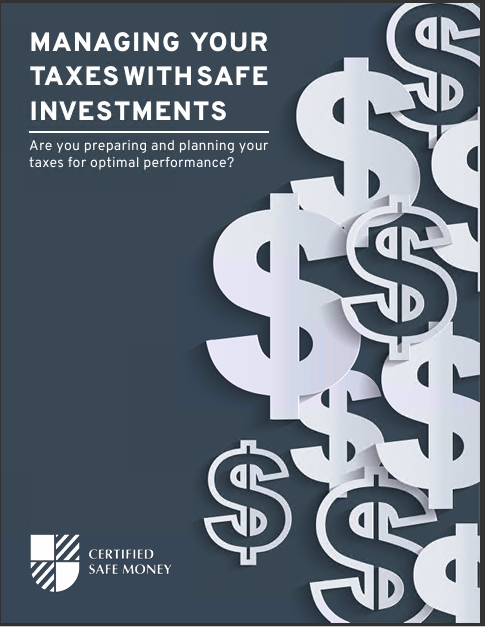Key Takeaways
-
Fixed annuities offer guaranteed returns but can limit your investment flexibility and access to your funds.
-
Carefully understanding hidden fees, taxes, inflation risks, and surrender charges is crucial before committing your savings.
Guaranteed But Limited: The Other Side of Stability
When you’re planning for your financial future, the security of guaranteed returns can feel incredibly appealing. Fixed annuities have long been marketed as a reliable way to generate predictable income, especially during retirement. However, the stability and guarantees often come with trade-offs that aren’t immediately obvious. Before deciding on this type of investment, you should be aware of several potential downsides that could significantly affect your financial freedom and planning flexibility.
Let’s dive into four key potential drawbacks that are commonly overlooked but can have significant impacts on your financial plans.
1. The High Price of Accessing Your Own Money
One appealing aspect of fixed annuities is the steady stream of payments you’ll receive over a specified period or for the rest of your life. However, what happens when life throws unexpected curveballs, and you need your money earlier than planned?
Beware the Surrender Charges
Fixed annuities often come with surrender charges, hefty fees imposed if you withdraw funds earlier than the agreed-upon timeline. These fees typically last between five and ten years, although some annuities carry charges lasting even longer—up to 15 years.
In the early years, surrender charges can be particularly high, often ranging from 5% to 10% of the withdrawal amount. Imagine needing to access a portion of your savings for an emergency and losing a significant percentage simply because you’re withdrawing too soon.
Limited Free Withdrawal Options
Some annuity providers may offer limited free withdrawal options, such as allowing you to withdraw up to 10% of your account balance annually without penalties. But beyond this threshold, substantial fees kick in. If you anticipate needing flexibility or access to your savings during the early years, fixed annuities might present an uncomfortable restriction.
2. Fixed Returns Mean Fixed Opportunities
Fixed annuities guarantee a set interest rate for a specific duration, ensuring a predictable income stream. While this might initially seem reassuring, especially in uncertain economic conditions, it comes with a hidden cost—lost investment opportunities.
Missing Out on Market Growth
With a fixed annuity, your earnings potential is limited to the contract’s specified interest rate. Let’s say your annuity guarantees a 3% return annually. That might sound good, particularly during times of market volatility, but if the market is performing well, you could miss out on significant growth opportunities.
While your peers might benefit from high-performing stock market years, your returns remain capped, limiting your potential wealth accumulation over time. This lost potential can accumulate significantly over decades, potentially reducing the financial freedom you hoped to enjoy in retirement.
Inflation: The Silent Threat
Inflation steadily erodes your purchasing power. With fixed annuities, the interest rate often does not adequately keep pace with rising inflation. Over 10, 20, or even 30 years, inflation significantly reduces the real value of your guaranteed payments.
If inflation runs higher than your fixed rate return, you’re effectively losing money in real terms each year. By the time you reach retirement, your monthly payouts might not cover your living expenses as comfortably as you initially imagined.
3. Taxation and Hidden Fees Can Catch You Off Guard
Understanding the real costs of fixed annuities involves more than simply knowing the advertised rates. Many fees are not prominently discussed when you’re considering these investments, yet they can considerably reduce your net earnings.
The Complexity of Taxes
One often overlooked factor is how fixed annuities are taxed. Unlike some investments, fixed annuity income is taxed at your ordinary income tax rate rather than at the potentially lower capital gains rate. When you begin receiving annuity payouts, especially during retirement when you might rely heavily on that income, the tax hit can be substantial.
Also, if you withdraw funds early (before age 59½), you might incur an additional 10% penalty from the IRS. This means careful planning is necessary to ensure your annuity aligns with your overall tax strategy and timeline.
Hidden Administrative Fees
Administrative fees, mortality expenses, and other hidden charges can quietly eat away at your savings. Even seemingly small administrative fees, like 1% annually, compounded over many years, can significantly diminish the net returns you expected.
Always review the contract’s fine print thoroughly and ask clear, pointed questions about all associated costs before signing anything. It’s critical to know exactly how much you’ll pay annually and how that impacts your long-term returns.
4. Lack of Liquidity and Reduced Flexibility
Liquidity—your ability to quickly access your cash when needed—is essential for managing life’s uncertainties. Unfortunately, fixed annuities rank low in liquidity, severely restricting your ability to pivot quickly if your financial situation changes.
Long-term Commitment
Annuities are essentially long-term contracts with your insurance provider. You’re committing your money for extended periods, often a decade or longer. Breaking these contracts prematurely, as mentioned earlier, involves surrender charges. This arrangement can be restrictive, particularly if your financial situation changes or unexpected expenses arise.
Limited Control and Customization
Fixed annuities offer less control and fewer opportunities for customization compared to other investment options. Once your money is locked in, the terms rarely allow for meaningful adjustments based on changes in your goals, market conditions, or financial needs.
If flexibility matters to you—for example, adjusting your investments based on changing market conditions or life stages—a fixed annuity might feel overly restrictive.
Reassessing Your Financial Priorities
Fixed annuities undeniably provide peace of mind through stable, predictable income. However, their limitations in liquidity, flexibility, potential returns, and hidden costs require you to reconsider carefully. Before committing your funds, thoroughly assess your financial goals, risk tolerance, and future needs.
Consider diversifying your investment strategy by combining fixed annuities with other financial products offering more flexibility and growth potential. Diversification can provide stability while preserving opportunities for financial growth and adaptability.
By fully understanding these four potential downsides, you’ll be better equipped to make informed decisions about your financial future. Always remember to align your choices with your long-term objectives and comfort with financial risks.
Making the Most Informed Decision Possible
Ultimately, fixed annuities might fit your financial strategy perfectly—or they might not. The critical step is evaluating these investments transparently, without overlooking the less obvious costs and restrictions. Take the time to consult financial professionals, read the fine print thoroughly, and critically assess how well fixed annuities align with your vision for financial stability and flexibility.
With careful planning and open-eyed consideration, you can confidently navigate these complex investment waters, ensuring your financial choices genuinely reflect your personal needs and long-term goals.














